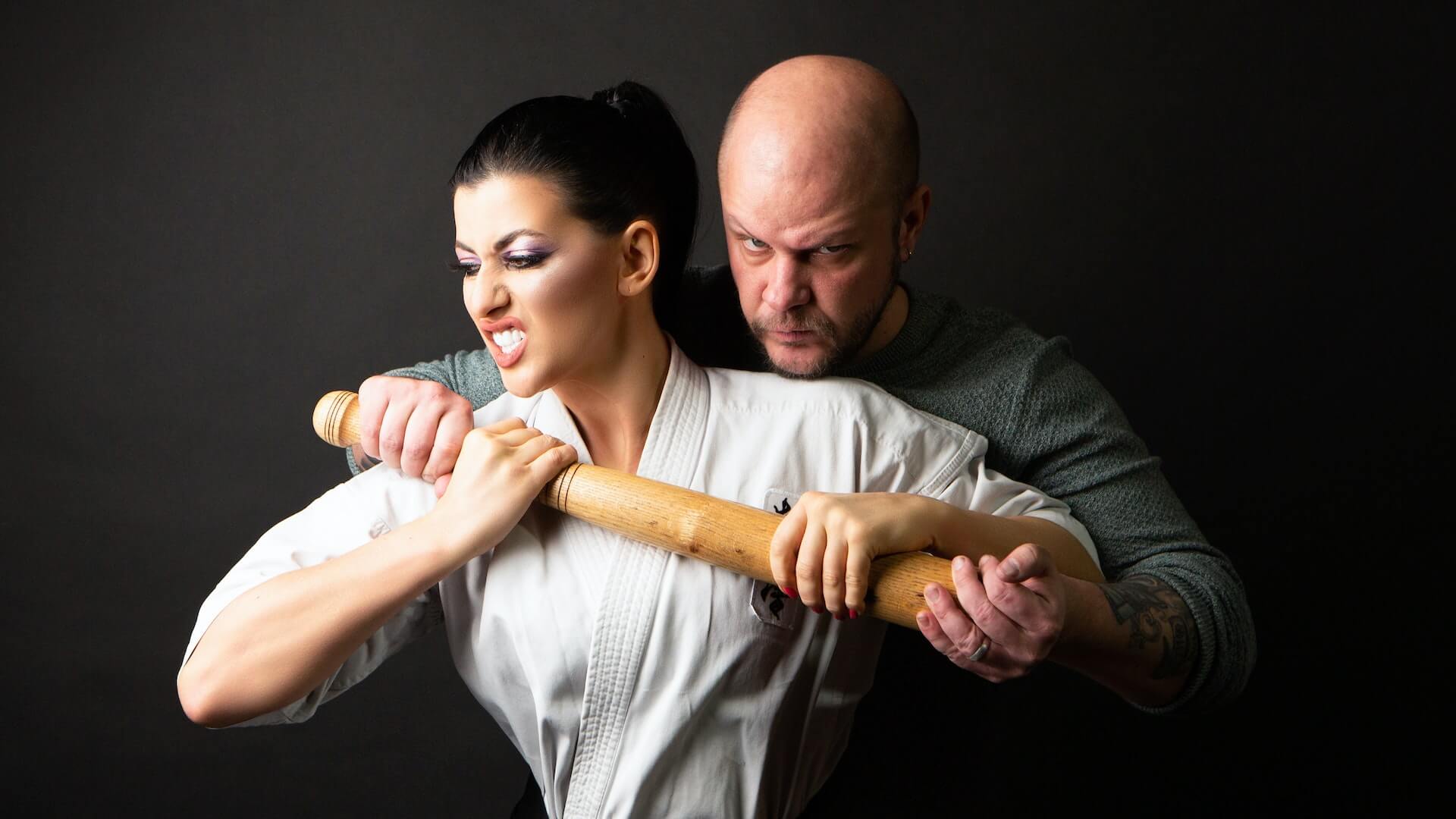In today’s society, unfortunately, the need for self-defense has become increasingly important. Crime rates have risen in many cities and there’s no telling when you might be in the wrong place at the wrong time. It’s important to empower yourself with the knowledge and skills to protect yourself and your loved ones. In this post, we’ll explore the basics of self-defense, including situational awareness, recognizing potential threats, and basic techniques to fend off an attacker. By learning the fundamentals of self-defense, you can gain the confidence to navigate through life knowing that you are better equipped to handle unexpected situations. So, whether you’re walking home alone at night or simply want to feel more secure in your everyday life, read on to learn the basics of self-defense.
Understanding the importance of self-defense
Understanding the importance of self-defense is crucial in today’s world. It goes beyond physical strength or learning martial arts techniques; it encompasses a mindset and set of skills that can empower individuals to protect themselves in potentially dangerous situations.

The world can be unpredictable, and unfortunately, instances of violence, harassment, and assault are not uncommon. By recognizing the importance of self-defense, you are taking a proactive stance towards your personal safety. Rather than relying solely on others or hoping that nothing bad will happen, you are equipping yourself with the knowledge and skills necessary to navigate challenging situations.
Self-defense is not about promoting violence or instigating conflicts. It is about being prepared and confident in your ability to protect yourself or others when faced with an imminent threat. It teaches you to be aware of your surroundings, identify potential risks, and make informed decisions in high-stress situations.
Moreover, self-defense is not limited to physical altercations. It also encompasses verbal and psychological self-defense, enabling you to set boundaries, handle confrontations, and de-escalate tense situations through effective communication.
By understanding the importance of self-defense, you are embracing personal empowerment. You are taking control of your own safety and well-being rather than relying solely on external factors. It boosts self-confidence, enhances situational awareness, and provides a sense of peace knowing that you have the skills to protect yourself if the need arises.
Common misconceptions about self-defense
Self-defense is a crucial skill that everyone should possess in order to protect themselves and feel empowered in potentially dangerous situations. However, there are several common misconceptions about self-defense that need to be addressed.
Firstly, many people believe that self-defense is all about physical strength and fighting skills. While being physically strong can be an advantage, self-defense is not solely dependent on brute force. In fact, the primary goal of self-defense techniques is to avoid physical confrontation whenever possible. It emphasizes awareness, prevention, and de-escalation strategies to diffuse a potentially dangerous situation before it escalates to violence.
Another misconception is that self-defense techniques are only for women. Although self-defense is often associated with women due to their vulnerability to certain types of attacks, it is equally important for everyone, regardless of gender or age. Self-defense is a universal skill that can be learned and practiced by anyone interested in protecting themselves and their loved ones.
Additionally, some people believe that carrying a weapon is the most effective form of self-defense. While having a personal safety device, such as pepper spray or a stun gun, can provide a sense of security, it is crucial to understand that relying solely on a weapon may not always be the best solution. In some cases, it can even escalate the situation or be used against you. Self-defense training focuses on developing situational awareness, assertiveness, and practical techniques that can be utilized even without any external tools.
Lastly, self-defense is often misunderstood as a one-time skill that can be learned in a short period. In reality, self-defense is an ongoing process that requires regular practice and reinforcement. Attending self-defense classes, workshops, or seminars can provide valuable knowledge and hands-on training to enhance your skills. Consistent practice not only improves physical techniques but also develops mental strength and confidence in handling challenging situations.
The mindset of self-defense: Awareness and preparedness
The foundation of self-defense lies in being aware of your surroundings and being prepared for any potential threats that may arise. This includes both physical and mental preparedness.

Awareness is the first line of defense. It involves being fully present in your surroundings, paying attention to people, objects, and actions around you. By being aware, you can identify potential dangers and take preventive measures to avoid them. This could mean crossing the street if you notice someone acting suspiciously or avoiding dimly lit areas at night.
Preparedness goes hand in hand with awareness. It means having a plan of action and the necessary skills to protect yourself if a dangerous situation arises. This could involve taking self-defense classes to learn basic techniques such as striking, blocking, and escaping holds. It could also mean carrying self-defense tools such as pepper spray or personal alarms, knowing how to use them effectively, and having them easily accessible.
Having a mindset of self-defense is not about living in fear, but rather about empowering yourself. It gives you the confidence and ability to protect yourself in potentially dangerous situations. By being aware and prepared, you are taking control of your personal safety and ensuring that you have the best chance of staying safe.
Basic self-defense techniques for personal safety
When it comes to personal safety, having a basic understanding of self-defense techniques can make a world of difference. These techniques are not just about physical strength but also about being aware of your surroundings and having the confidence to protect yourself if needed. Here are a few basic self-defense techniques that can empower you and enhance your personal safety:
1. The Palm Strike:
This is a simple but effective technique that involves using the heel of your palm to strike the attacker’s nose, chin, or throat. Aim for vulnerable areas to incapacitate your attacker and create an opportunity to escape.
2. The Knee Strike:
If your attacker is within close range, use your knee to strike their groin or stomach. This technique can quickly incapacitate the attacker and provide an opportunity for you to flee.
3. The Escape Techniques:
Learning how to break free from grabs and holds is crucial in self-defense. Techniques like wrist escapes, bear hug escapes, and chokehold escapes can help you regain control of the situation and create a window for escape.
4. Verbal Self-Defense:
Communication skills are an essential part of self-defense. Learning how to assertively communicate your boundaries and use verbal de-escalation techniques can help diffuse potentially dangerous situations before they escalate.
Physical fitness and self-defense: Why it matters
When it comes to protecting yourself, having a strong and fit body can make a significant difference. Not only does physical fitness improve your overall health and well-being, but it also enhances your ability to defend yourself in dangerous situations.

Engaging in regular exercise routines such as strength training, cardiovascular exercises, and flexibility exercises can increase your strength, endurance, and agility. Building strength in your muscles, particularly in your core and lower body, can help you generate more power in your strikes and movements. Improved cardiovascular fitness enables you to maintain stamina and react swiftly in high-stress situations. Flexibility exercises enhance your range of motion and help prevent injuries during self-defense maneuvers.
Moreover, physical fitness positively impacts your mental and emotional well-being, which are essential components of effective self-defense. Regular exercise has been shown to reduce stress, boost confidence, and improve self-esteem. When you feel physically capable and mentally strong, you are more likely to respond calmly and assertively in threatening situations.
Attending self-defense classes that incorporate physical fitness elements can be highly beneficial. These classes not only teach you important techniques and strategies for self-defense but also provide a structured environment to improve your physical fitness. They often focus on functional movements and practical exercises that simulate real-life confrontations, helping you build the necessary skills and confidence to defend yourself effectively.
Self-defense tools and equipment to consider
While self-defense techniques and strategies are crucial, having the appropriate tools can provide an added layer of protection. Here are some self-defense tools and equipment to consider:
1. Pepper Spray:
Pepper spray is a popular and effective self-defense tool. It contains a chemical compound called capsaicin, which causes temporary blindness, difficulty breathing, and intense burning sensations. Compact and easy to carry, pepper spray can provide you with a means of defense from a safe distance.
2. Personal Alarm:
A personal alarm is a small device that emits a loud, attention-grabbing sound when activated. This can startle and deter potential attackers, attracting the attention of others nearby. Personal alarms are compact, lightweight, and can easily be attached to keychains or carried in a pocket or purse.
3. Stun Gun:
A stun gun is a handheld device that delivers an electric shock to immobilize an attacker temporarily. It works by disrupting the body’s electrical system, causing disorientation and loss of muscle control. Stun guns come in various sizes and voltages, ensuring there is an option suitable for your needs.
4. Tactical Flashlight:
A tactical flashlight is not only a tool for illumination but also a versatile self-defense weapon. These flashlights are designed with a sturdy construction and often feature a striking bezel or a built-in stun gun. The bright light can temporarily blind an attacker, giving you a momentary advantage to escape or defend yourself.
5. Personal Protection Keychain:
Personal protection keychains are cleverly designed tools that can be easily attached to your keys. They often feature sharp edges or pointed tips that can be used for striking or jabbing an assailant. These keychains are discreet and convenient, ensuring you always have a self-defense tool within reach.
Empowering yourself through self-defense training
In today’s world, it is important to be prepared and equipped with the necessary skills to protect oneself in potentially dangerous situations.
Self-defense training goes beyond physical techniques. It also focuses on mental preparedness, awareness, and assertiveness. By learning self-defense, you gain a sense of control and empowerment over your own safety.
During self-defense classes, you will learn practical techniques such as striking, blocking, and grappling, which can be used to defend yourself against an attacker. These techniques are designed to be effective regardless of your size or physical strength, making self-defense accessible to everyone.
However, self-defense training is not just about learning how to physically defend yourself. It also emphasizes the importance of situational awareness, recognizing potential threats, and de-escalation techniques to avoid conflicts whenever possible.
Moreover, self-defense training provides an opportunity to build confidence and improve self-esteem. As you learn and practice new skills, you will develop a stronger sense of self and the ability to assert yourself in various situations.
Beyond the physical and mental aspects, self-defense training fosters a supportive and empowering community. You will meet like-minded individuals who are also on a journey to build their confidence and enhance their personal safety. This sense of community can be invaluable in providing encouragement and support along the way.
Building confidence and assertiveness
Confidence is the foundation of self-defense. When you believe in your abilities and trust your instincts, you project an aura of strength that can deter potential attackers. Building confidence starts with understanding your strengths and weaknesses. Take the time to assess your physical and mental capabilities, and focus on enhancing them through regular practice and training.

Assertiveness is another key trait that can significantly impact your personal safety. It involves expressing your thoughts, needs, and boundaries in a clear and direct manner, without fear of judgment or confrontation. Being assertive enables you to set boundaries and stand up for yourself, reducing the likelihood of becoming a target for potential threats.
To build confidence and assertiveness, consider enrolling in self-defense classes or workshops. These training sessions provide a supportive environment where you can learn practical techniques while gaining the confidence to use them effectively. Additionally, practicing assertive communication through role-playing exercises can help you develop the necessary skills to assert yourself in various situations.
Outside of formal training, there are several strategies you can employ to boost your confidence and assertiveness. Surround yourself with positive influences and supportive individuals who encourage your personal growth. Engage in activities that challenge you and push you outside of your comfort zone, as this can help build resilience and self-assurance. Regular physical exercise, such as martial arts or strength training, can also contribute to improved self-esteem and body confidence.
The legal implications of self-defense
While defending yourself is a basic human right, it is important to do so within the confines of the law. Each jurisdiction may have different laws and regulations regarding self-defense, so it is essential to familiarize yourself with the legal framework specific to your area.
Self-defense laws generally require that the threat you are facing is imminent and that your response is proportional to the threat. This means that you should only use the necessary amount of force to protect yourself or others from harm. It is important to note that the definition of “necessary” can vary depending on the circumstances, so it is wise to consult with legal professionals or experts in self-defense law to fully understand your rights and responsibilities.
Moreover, it is crucial to consider the concept of “duty to retreat.” In some jurisdictions, individuals have a legal obligation to retreat or attempt to escape from a dangerous situation before resorting to self-defense. However, in other jurisdictions, individuals have the right to stand their ground and defend themselves without the obligation to retreat. Understanding the laws in your specific jurisdiction will help you make informed decisions in high-pressure situations.
Additionally, it is important to remember that self-defense is not an excuse for aggression or unnecessary violence. The use of excessive force can lead to legal consequences and negate any claim of self-defense. It is essential to exercise restraint and only use force when absolutely necessary to protect yourself or others.
Self-defense for different demographics: Women, children, and seniors
For women, self-defense techniques should focus on utilizing their physical strength and exploiting the assailant’s vulnerabilities. Techniques such as striking vital points, using joint locks, and employing effective verbal communication can help women feel more empowered and capable of protecting themselves in potentially dangerous situations. Additionally, women should be encouraged to take self-defense classes that teach practical skills and provide a supportive environment for learning and practicing.
When it comes to children, self-defense education should emphasize prevention, awareness, and assertiveness. Teaching children to trust their instincts, recognize and avoid dangerous situations, and use their voice to assert boundaries can go a long way in equipping them with the tools to protect themselves. Additionally, basic physical techniques like striking vulnerable areas, escaping grabs, and creating distance should be taught in a manner appropriate for their age and physical abilities.
Seniors may face unique challenges due to physical limitations or health conditions. However, self-defense is still relevant and attainable for this demographic. Techniques that focus on leverage, balance, and utilizing common objects as improvised weapons can be particularly effective for seniors. Additionally, seniors should prioritize personal safety by being aware of their surroundings, avoiding isolated areas, and seeking assistance or support when needed.
Conclusion
Learning how to protect yourself is an essential skill that can boost your confidence and provide you with a sense of security. By following the tips and techniques outlined in this article, you can take the first steps towards equipping yourself with the knowledge and skills necessary to defend yourself in various situations. Remember, self-defense is not just about physical strength, but also about awareness, prevention, and assertiveness. Stay safe, stay strong, and empower yourself with the knowledge you’ve gained from this article.



